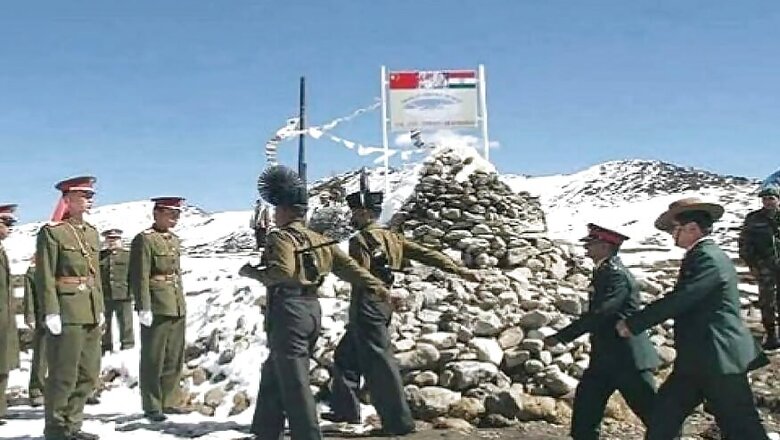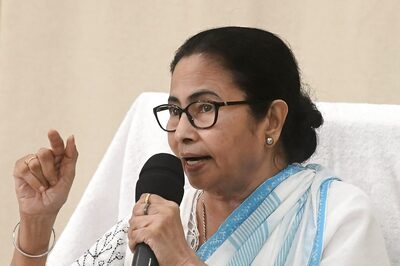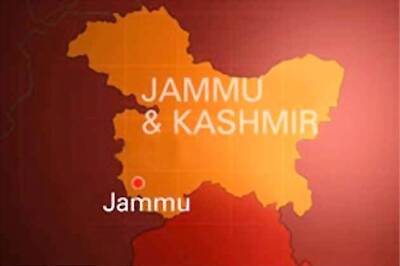
views
‘Hindi-Chini Bhai Bhai’ — the famous slogan which was the catchphrase of India’s diplomacy with China in the mid 1950s now seems to be a distant dream as the two Asian powerhouses are entangled in a serious border dispute along Eastern Ladakh and Naku La in Sikkim.
The current border crisis between India and China is not new. There are various stretches of dispute between the 3,488 kms long Line of Actual Control (LAC).
The India-China border is divided into three sectors — Western (Ladakh), Middle (Himachal Pradesh and Uttarakhand) and Eastern (Sikkim and Arunachal Pradesh). The Middle sector remains largely peaceful. India accuses China of illegally occupying Aksai Chin in Ladakh, while China does not accept the McMahon Line as the official border because it was signed by the Tibetan representatives in the 1914 Simla Convention, and claims the entire Indian state of Arunachal Pradesh as its territory.
We look back at some of the more recent INDO-SINO border skirmishes post 2014 and try and connect them with India’s post independence history. We also look at the strategic timing and the diplomacy behind these altercations.
May 2020: Eastern Ladakh and Sikkim
The recent scuffle started near the northern banks of the Pangong Tso Lake, two-thirds of which is under Chinese control. Sources state that on May 5, the Chinese objected to the presence of Indian troops in the disputed area which led to fist-fights and stone pelting, leaving a few injured on both sides.
On May 9, there was a standoff with blows exchanged at the Naku La pass in Sikkim along the LAC, located at 19,000 feet above sea level when a patrol party of the People’s Liberation Army (PLA) was stopped by Indian soldiers.
The more serious confrontation could happen in the Galwan Valley region of Aksai Region — the flashpoint of the 1962 War — where the Chinese have accused India of undertaking infrastructure construction activities. China was annoyed after India’s Border Roads Organisation had built the Shyok-Daulat Beg Oldi road last year. It does not want India to gain a military advantage by gaining access to Daulat Beg Oldi where the Indian Air Force reactivated an Advanced Landing Ground (ALG) in 2008.
According to sources, the trigger was the construction of the Col Chewang Rinchen Setu — India’s highest altitude all-weather bridge. The developments at Pangong Tso Lake and Naku La seemed to have triggered the PLA who made incursions 1 to 3 km inside what India claims is their territory. The PLA has moved 5,000 soldiers of its border defence regiments close to the LAC.
This latest aggression by China comes at a time when the country is facing criticism from all over the world for the spread and lack of transparency of information related to Covid-19. China was forced to agree to an impartial probe into the virus source and the role of the WHO’s response to the pandemic after a resolution seeking the same was backed by 120 countries, including India. India’s new leadership role as the Chair of the Executive Board of the WHO may have also peeved China and forced it to show assertiveness back home amid huge economic losses due to Covid-19.
China was also unhappy after India revoked Article 370 in 2019, specifically over the formation of Ladakh as a Union Territory — as it claims Aksai Chin to be a part of their territory.
September 2019: Eastern Ladakh
A face-off between the Indian and Chinese soldiers took place on the northern bank of the Pangong Tso Lake just days before the Indian Army planned to conduct a massive war-game exercise involving all its arms and services to test its new integrated battle groups (IBGs) in Arunachal Pradesh in September 2019. It also happened a month ahead of the visit of the Chinese President, Xi Jinping to India in October.
August 2018: Demchok
PLA troops intruded 400 metres into the Indian side of the LAC in eastern Ladakh and set up five tents in the Cherdong-Nerlong Nallan area in protest against building of a road in the Nerlong area of Ladakh.
June 2017: Doklam
The Indian Armed Forces and the PLA were involved in a 73-day standoff over the construction of a road by the Chinese in the Doklam Plateau claimed both by China as well as Bhutan. India, which supports Bhutan’s claim over the disputed area, sent in 270 troops to stop their Chinese counterparts. The construction of the road was stopped and the troops were mutually withdrawn. India’s strategic restraint enhanced Delhi’s profile in South East Asia.
Doklam is strategically located close to the Siliguri Corridor (also called Chicken’s Neck), connecting mainland India with its north-eastern states and is a vulnerable point for India. China, which has been consolidating its military presence in the Chumbi Valley, realise that Doklam would give them easy access to the Siliguri Corridor.
September 2015: Burtse
The Indo Tibetan Border Police (ITBP) and the Indian Army demolished a temporary hut built by the Chinese troops in Burtse, North Ladakh. The area gave India advantage to overlook the Karakoram highway linking the territory illegally occupied by China with Pakistan-Occupied-Kashmir.
September 2014: Demchok and Chumar
India and China had a three-week face-off along the LAC when Indian workers began constructing a 100-foot long water channel in Demchok for local villagers. There was also a 16-day altercation at Chumar, the last village in Ladakh bordering Himachal Pradesh, when some Chinese workers claimed that they had orders to build a road up to Tible, five kilometers deep into the Indian territory. These incidents coincided with Xi Jinping’s visit to India, which was particularly important to the newly elected Prime Minister Narendra Modi.
April 2013: Daulat Beg Oldi
A PLA contingent set up a camp in Raki Nula, 30 km south of Daulat Beg Oldi near the Aksai Chin-Ladakh LAC. In retaliation, Indian forces built their own camps 300 metres away. Tensions grew as China brought in reinforcements through trucks and helicopters. The dispute was finally settled after three weeks.
The region, although mostly a wasteland, is strategically important to China due to the presence of a highway that connects Pakistan to Tibet and Xinjiang.
May 1987: Tawang
The Indian military movements in Arunachal Pradesh’s Tawang were seen as a provocation by the Chinese who threatened India with war. China claimed that the entire state of Arunachal Pradesh was their territory. But India, determined to defend its border with China, had already begun fortifying its defences in the early 1980s under Indira Gandhi. It reacted sharply to the threat of war by granting statehood to Arunachal under Rajiv Gandhi in 1987. Indian and Chinese troops came face to face in places like Sulu La and Bum La by April. A war was predicted and was only averted when the then External Affairs Minister, N.D. Tiwari visited Beijing enroute to Pyongyang clearly stating New Delhi’s position of not aggravating the situation.
Septemer and October 1967: Nathu La & Cho La
The PLA launched an attack on the Indian posts in Nathu La in September 1967, while in October another clash took place at Cho La and ended on the same day. Independent sources suggest that India gained the tactical advantage in these clashes in Sikkim defeating the Chinese forces. According to the Defence Ministry, 88 Indian Army and 340 Chinese soldiers were killed during the two incidents. The competition to control the strategic disputed border land in Chumbi Valley was the major cause leading to these incidents.
The 1962 India-China War
The main reason for the 1962 war was the dispute over the sovereignty of the Aksai Chin region of eastern Ladakh and Arunachal Pradesh. There had been growing tension and a series of border skirmishes between the two nations following the 1959 Tibetan uprising, when India granted political asylum to the Dalai Lama. Around 3,250 Indian soldiers were killed in the war and the Chinese occupied the region of Aksai Chin and Arunachal Pradesh. It later withdrew from the north-east and declared a ceasefire.



















Comments
0 comment